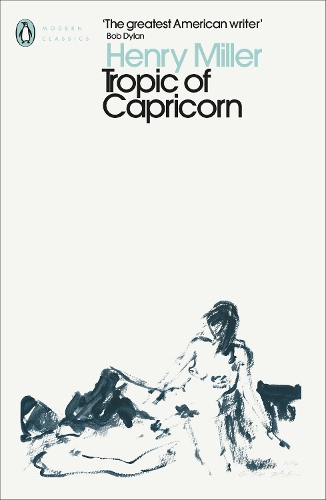
Tropic of Capricorn
(Paperback)
Publishing Details
Tropic of Capricorn
By (Author) Henry Miller
Penguin Books Ltd
Penguin Classics
4th June 2015
4th June 2015
United Kingdom
Classifications
General
Fiction
Erotic fiction / Erotica
813.52
Physical Properties
Paperback
320
Width 130mm, Height 198mm, Spine 18mm
239g
Description
One of Henry Miller's most scandalous books, Tropic of Capricorn is now in Penguin Modern Classics for the first time A story of sexual and spiritual awakening, Tropic of Capricorn shocked readers as much as Henry Miller's first novel, Tropic of Cancer. A mixture of fiction and autobiography, it is the story of Henry V. Miller who works for the Cosmodemonic telegraph company in New York in the 1920s and tries to write the most important work of literature that was ever published. Tropic of Capricorn paints a dazzling picture of the life of the writer and of New York City between the wars- the skyscrapers and the sewers, the lust and the dejection, the smells and the sounds of a city that is perpetually in motion. As daring, frank and erotic as his first novel, Tropic of Capricorn is a cult modern classic.
Reviews
American Literature begins and ends with the meaning of what Miller has done -- Lawrence Durrell
The only imaginative prose-writer of the slightest value who has appeared among the English-speaking races for some years past -- George Orwell
The greatest American writer -- Bob Dylan
There is nothing like Henry Miller when he gets rolling... One has to take the English language back to Marlowe and Shakespeare before encountering a wealth of imagery equal in intensity... a wildwater of prose, a cataract, a volcano, a torrent, an earthquake... a writer finally like a great athlete, a phenomenon of an avatar of literary energy -- Norman Mailer
Henry is like a mythical animal. His writing is flamboyant, torrential, chaotic, treacherous, and dangerous -- Anais Nin
Author Bio
Henry Miller (1891-1980) is one of the most important American writers of the 20th century. His best-known novels include Tropic of Cancer (1934), Tropic of Capricorn (1939), and the Rosy Crucifixion trilogy (Sexus, 1949, Plexus, 1953, and Nexus, 1959), all published in France and banned in the US and the UK until 1964. He is widely recognised as an irreverent, risk-taking writer who redefined the novel and made the link between the European avant-garde and the American Beat generation.
